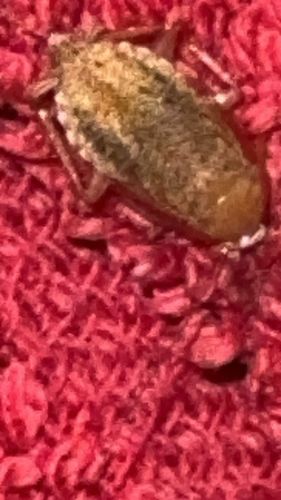Planthopper (likely Flatidae family, specifically a Flatid Planthopper or Flatid Bug)
Scientific Name: Members of the family Flatidae. A specific scientific name cannot be determined from the image alone without more detailed features or geographical context, but examples include different genera and species within Flatidae.
Order & Family: Order: Hemiptera, Family: Flatidae
Size: Generally range from 5 mm to 20 mm in length, depending on the species. The individual in the image appears to be on the smaller to medium side within this range.

Natural Habitat
Found in diverse terrestrial habitats where host plants are available, including forests, woodlands, gardens, agricultural fields, and natural areas. They spend their lives on various plants.
Diet & Feeding
Herbivorous, feeding on plant sap by piercing plant stems and leaves with their stylets (mouthparts). They can feed on a wide variety of host plants, including trees, shrubs, and herbaceous plants.
Behavior Patterns
Planthoppers are typically strong jumpers, hence their common name. Many species are known for their waxy secretions, which can cover their bodies in a powdery or filamentous layer, as seen in the image. This waxy coating helps protect them from predators and desiccation. Adults and nymphs feed on plant sap. Some species can lay eggs in plant stems.
Risks & Benefits
Potential risks include being plant pests in agricultural or horticultural settings, as their feeding can stunt plant growth, cause wilting, or transmit plant diseases (though this is more common with certain other hemipterans like leafhoppers or aphids). While they produce honeydew, which can lead to sooty mold, they are generally not considered major pests unless present in very large numbers. Benefits are limited; they serve as a food source for other insects and birds within the ecosystem.
Identified on: 9/2/2025